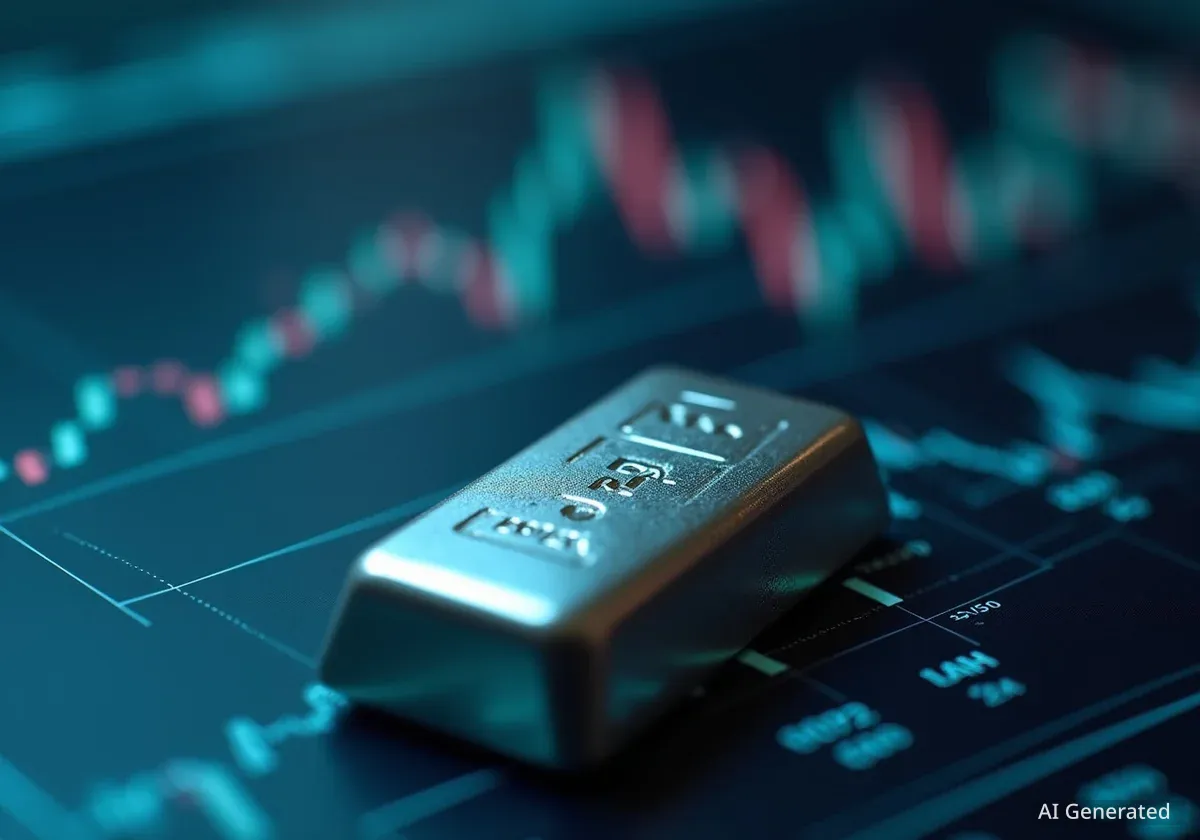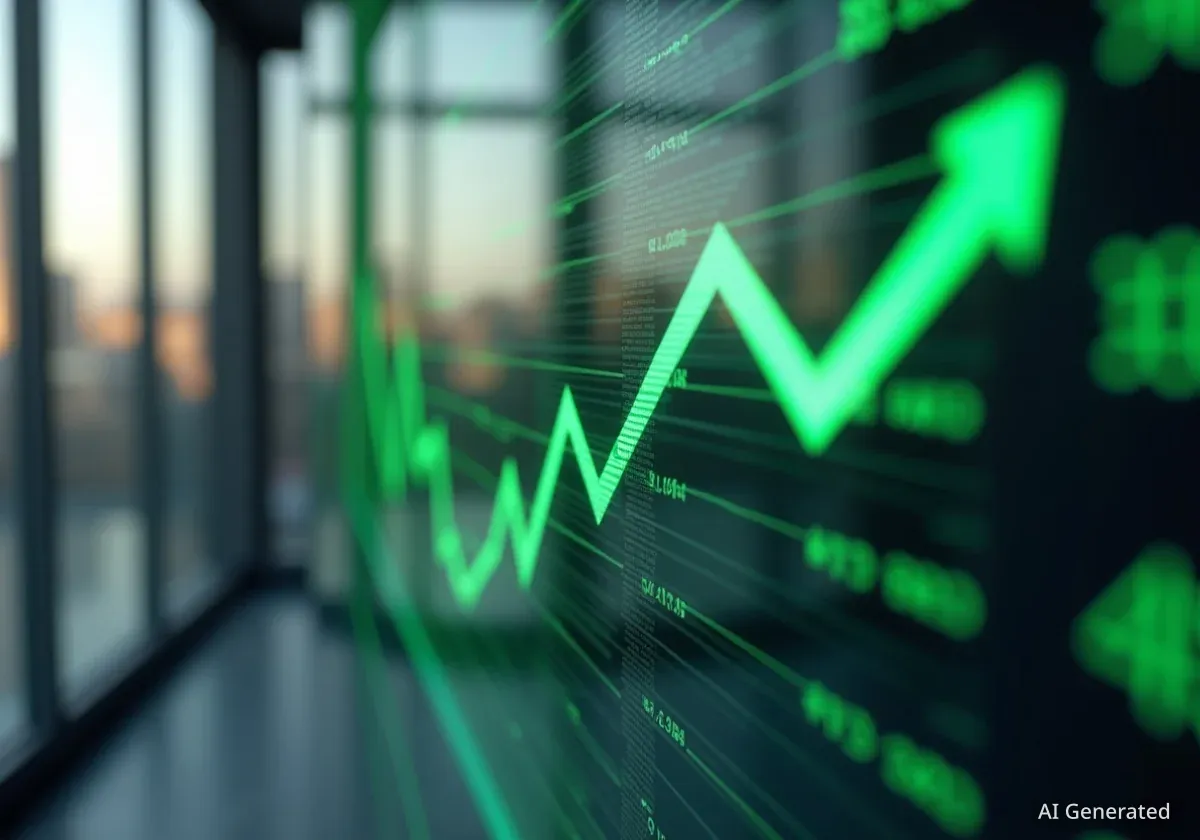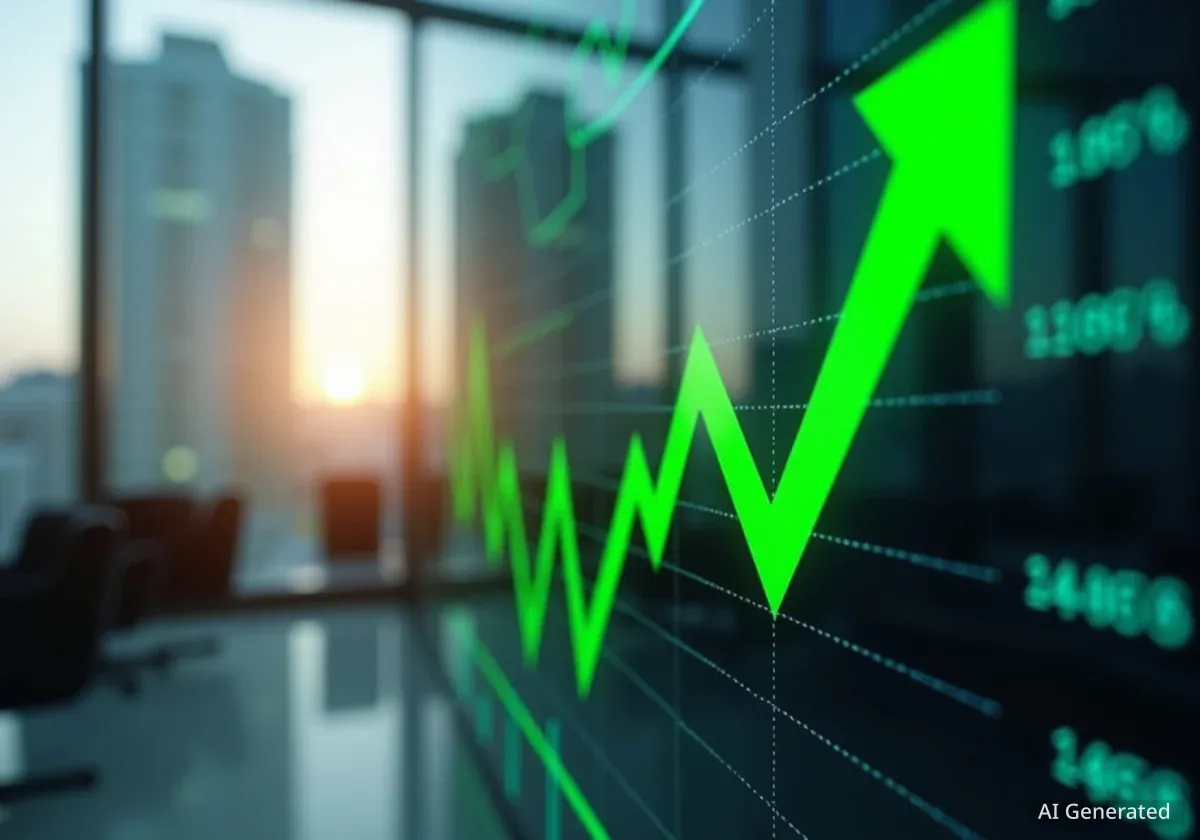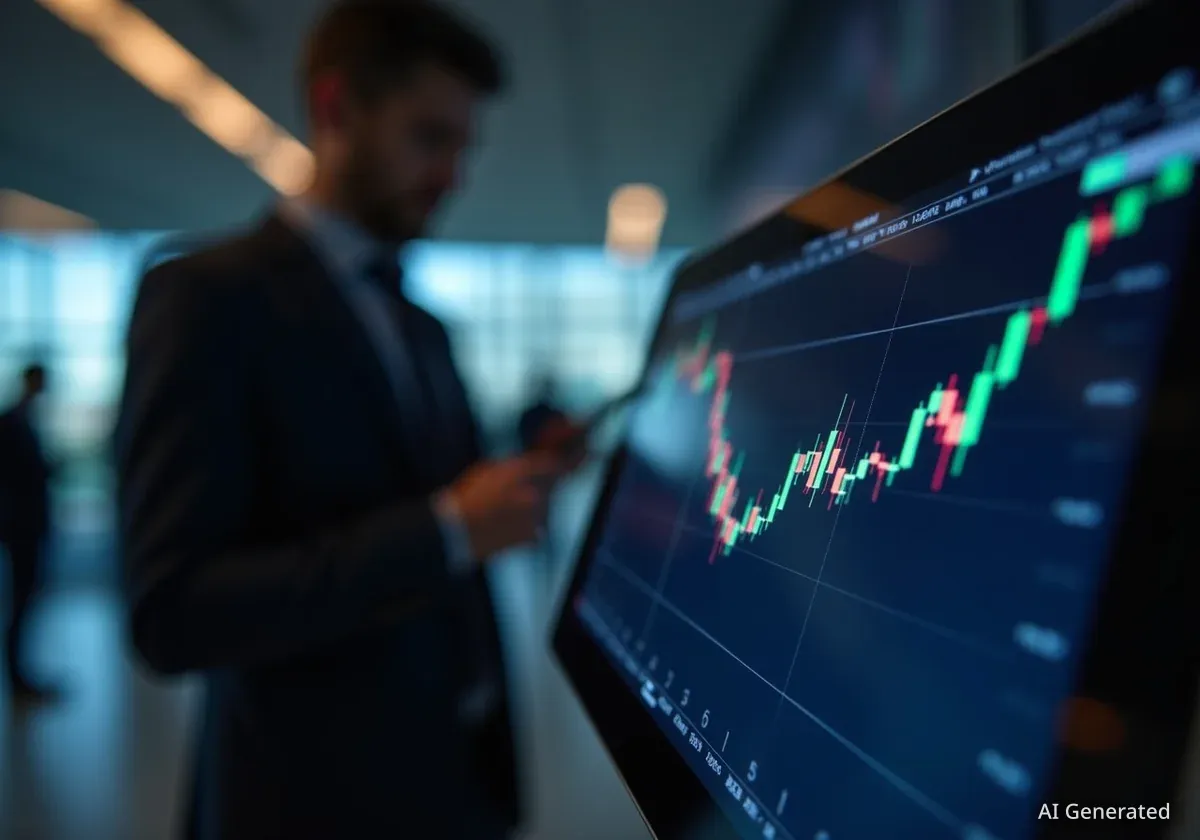Silver futures have experienced a significant rally in 2025, climbing approximately 44% to reach their highest price point since 2011. This impressive performance has outpaced even the substantial gains seen in gold, which has risen about 39% during the same period.
Investors are increasingly turning to precious metals as a safeguard against economic uncertainty, driven by shifts in global trade, concerns over monetary policy, and a weakening U.S. dollar. While gold is on track for its best year in decades, key market indicators suggest that silver may have further room for growth.
Key Takeaways
- Silver futures have increased by 44% this year, marking the highest level since 2011.
- Gold has also seen strong performance, with a 39% gain in 2025, its best showing since 1979.
- The gold-to-silver ratio currently stands at 90, significantly above its historical averages, suggesting silver may be undervalued relative to gold.
- Investor interest is fueled by global economic shifts, a weakening U.S. dollar, and silver's dual role as both a precious metal and an industrial component.
Precious Metals Rally Amid Economic Uncertainty
Both gold and silver have become favored assets for investors in 2025. A confluence of global economic factors has contributed to this trend, including a realignment of international trade dynamics, questions surrounding the independence of the Federal Reserve, and a noticeable decline in the value of the U.S. dollar.
Gold's 39% rise this year positions it for its strongest annual performance since 1979. This has drawn significant attention, but silver's 44% surge indicates even more aggressive momentum. The dual appeal of silver, both as a monetary metal and a critical industrial material, has amplified its demand.
Why Investors Choose Precious Metals
Historically, investors have purchased gold and silver as a hedge against inflation and currency devaluation. During periods of economic or geopolitical instability, these metals are often seen as a reliable store of value when compared to fiat currencies or equities.
The sentiment is strong among seasoned market observers. David Rosenberg of Rosenberg Research recently noted his personal strategy, stating he had acquired a significant amount of physical gold and silver for secure storage. This move reflects a broader trend of seeking tangible assets in a volatile market environment.
Analyzing the Gold-to-Silver Ratio
One of the most compelling arguments for silver's continued potential lies in the gold-to-silver ratio. This metric simply measures how many ounces of silver are required to purchase one ounce of gold. A higher ratio suggests that silver is relatively inexpensive compared to gold.
Currently, the ratio is approximately 90. According to Dow Jones Market Data, this is considerably higher than historical norms. The average ratio over the past 20 years was 70, while the 50-year average was even lower at 63. This disparity indicates a potential valuation gap that could narrow if silver prices continue to climb faster than gold's.
Historical Ratio Comparisons
- Current Ratio: ~90
- 2019-2020 Easing Period: 87
- 2007-2008 Financial Crisis: 59
- 50-Year Average: 63
Comparing the current ratio to previous periods of monetary easing by the Federal Reserve further highlights the potential for silver. During the easing cycle from August 2019 to March 2020, the ratio was at 87. In the financial crisis between September 2007 and December 2008, it was much lower at 59. The current elevated ratio suggests that, based on historical precedent, silver's price has more ground to cover to catch up with gold.
Investor Strategy and Market Demand
The sharp increase in gold's price may be inadvertently driving more investors toward silver. Chris Mancini, a portfolio co-manager for the Gabelli Gold fund, suggests that as gold becomes more expensive, retail investors are often drawn to silver as a more accessible alternative for precious metal exposure.
"As gold moves higher, more retail investors may be drawn to silver," says Chris Mancini, highlighting the metal's appeal to a broader market.
This sentiment is echoed by institutional analysis. The Bear Trap Report, a financial publication, recently noted a strategic shift in its holdings. On September 12, it stated, "We have reduced our gold and gold-miner exposure, but we remain long [silver]." This indicates a belief among some market analysts that silver currently presents a more attractive opportunity.
Silver's Industrial Importance
Unlike gold, a significant portion of silver's demand comes from industrial applications. It is a crucial component in the manufacturing of semiconductors, solar panels, and various electronic devices. This industrial demand provides a floor for silver's price that is independent of investor sentiment, adding another layer to its investment thesis.
Broader Economic Context
The rush to precious metals is happening alongside concerning trends in the wider economy. Recent data reveals underlying weaknesses that support the case for holding safe-haven assets.
The labor market shows signs of strain, with 1.9 million workers now unemployed for six months or longer. This figure represents 26% of the total jobless population and marks a post-Covid high. Furthermore, the unemployment rate for Black workers rose to 7.5% in August, up from 6.1% a year earlier, indicating deepening economic disparities.
Consumer spending patterns also reveal a growing divide. In the second quarter, the top 10% of income earners accounted for 49.2% of all consumer spending, the highest proportion recorded since 1989. This concentration of spending power points to economic fragility for a large portion of the population.
These economic indicators, combined with ongoing inflation concerns, create an environment where assets like gold and silver, which are not tied to any single government's fiscal or monetary policy, become increasingly attractive to a wide range of investors looking to preserve their capital.





